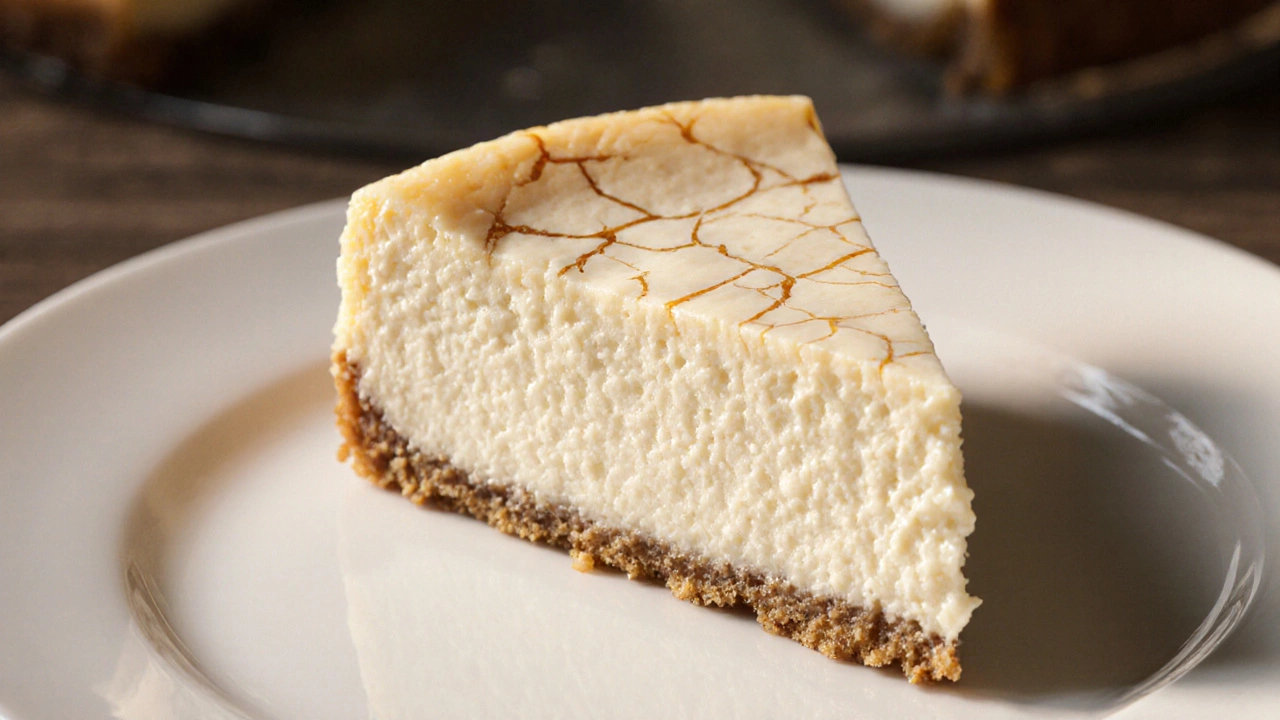
New York Cheesecake Calculator
Create Your Perfect Cheesecake
Calculate exact ingredient measurements for authentic New York cheesecake
Pro Tip: For authentic texture, use full-fat cream cheese (32%-40% fat), room temperature dairy, and a water bath.
When you hear New York-style cheesecake is a rich, dense, cream cheese‑based dessert that originated in the United States, the image of a buttery graham‑crust base and a velvety filling probably pops up. This article uncovers why that cheesecake became a city legend, breaks down the key ingredients, shows you a solid home‑cooking method, and points you to the three spots where locals still swear by the original.
What makes a New York cheesecake “New York”?
The answer boils down to three technical traits:
- It uses a full‑fat cream cheese base, not ricotta or cottage cheese.
- The batter is baked at a high temperature then finished with a cool‑down period, creating a slightly cracked top.
- A thin graham cracker crust (or sometimes a digestive biscuit version) provides a buttery contrast.
Those elements give the dessert its signature dense yet creamy texture-a texture that feels more like a custard than a fluffy mousse.
The birth of the legend: Junior’s and the 1950s boom
While many bakeries claim a stake, the name most associated with the iconic slice is Junior's Restaurant. Founded in 1950 in Brooklyn, Junior’s originally served a simple cheese tart. The owner’s son, Murray, added sour cream and a dash of lemon juice, then baked it in a water bath. The result was a richer, smoother cake that quickly outshone the competition.
By the 1970s the recipe had spread across New York, but Junior’s kept the exact ratios a secret, turning the dessert into a tourist pilgrimage. In 2019 the restaurant celebrated its 70th anniversary by publishing a “close‑to‑original” version-still a benchmark for home bakers.
Core ingredients and why they matter
- Cream cheese (32 %‑40 % fat): Provides the body and the tang you expect.
- Sour cream (or heavy cream): Adds moisture and a subtle sour note that balances the sweetness.
- Granulated sugar: Sweetens without overpowering the dairy flavor.
- Eggs: Bind the mixture and give it that custard‑like set.
- Vanilla extract: Enhances overall aroma.
- Lemon zest or juice: Offers a bright counterpoint to the richness.
- Baking soda (a pinch): Helps the top crack in a controlled way.
Each component is selected for its functional role. Skip the sour cream, and the cake can turn dry; omit the baking soda, and you lose that signature crack.
Step‑by‑step home recipe (baked, classic method)
- Preheat the oven to 325 °F (163 °C). Place a large roasting pan on the lower rack and fill it halfway with hot water to create a bain‑marie.
- Make the crust: Mix 1 ½ cups crushed graham crackers, ¼ cup melted butter, and 2 Tbsp sugar. Press into the bottom of a 9‑inch springform pan. Chill 15 minutes.
- Beat 24 oz of softened cream cheese with 1 cup sugar until smooth (about 2 minutes). Add 1 cup sour cream, 2 Tbsp lemon zest, and 1 tsp vanilla; mix briefly.
- Whisk in 3 large eggs one at a time, then stir in ¼ tsp baking soda. Do not over‑mix-air bubbles cause cracks in the wrong places.
- Pour the batter onto the chilled crust. Tap the pan gently to release trapped air.
- Slide the springform pan onto the pre‑heated roasting pan. Bake 55‑65 minutes, until the center jiggles slightly.
- Turn the oven off, crack the door open, and let the cheesecake cool in the oven for 1 hour. This gradual cooling reduces cracking.
- Refrigerate for at least 4 hours, preferably overnight, before serving.
The result should be a dense, velvety slice with a faintly cracked top-exactly what you’d expect at a Manhattan deli.
Comparing the city’s three most‑cited versions
| Bakery | Key Twist | Texture Rating (1‑5) | Best Served |
|---|---|---|---|
| Junior's Restaurant | Sour‑cream finish, light lemon zest | 5 | Room‑temperature slice with a dollop of whipped cream |
| Eileen's Special | Rich caramel topping, extra butter crust | 4 | Warm, with caramel drizzle |
| Two Little Red Hens | Added ricotta for a slightly lighter bite | 3.5 | Chilled, plain or with fresh berries |
All three stick to the core ingredients, but each adds a signature element that defines its fan base. If you’re hunting the “original,” most purists point to Junior’s for staying closest to the 1950 formula.
Beyond the classic: popular variations you can try at home
Once you master the base, the sky’s the limit. Here are three crowd‑pleasers that keep the New York spirit alive:
- Berry Swirl: Fold ½ cup fresh raspberry puree into the batter before baking. The tart fruit cuts through the richness.
- Chocolate Marble: Add ¼ cup melted dark chocolate to half of the batter, then dollop both halves alternately to create a marble effect.
- Salted Caramel: Drizzle a thick salted caramel sauce over the chilled cake and sprinkle flaky sea salt on top.
Each version respects the dense texture while introducing a new flavor dimension.
Where to taste the authentic slice in New York City
If you’re visiting the city, these three spots guarantee a genuine experience:
- Junior’s Restaurant - Brooklyn: The flagship location still bakes the classic recipe in a wood‑fired oven. Expect a line during lunch, but the wait is worth it.
- Eileen’s Special - Manhattan: Tucked in the Upper West Side, they serve a version with a caramel glaze that locals claim is “the best sweet finish.”
- Two Little Red Hens - Upper East Side: Their slice leans slightly lighter thanks to a ricotta‑cream cheese blend, making it a gentle introduction for first‑timers.
All three bake fresh daily; you’ll usually find the cheesecake displayed behind a glass case, ready to be sliced on the spot.
Common pitfalls and pro‑tips
- Do not over‑mix: Excess air leads to large cracks and a spongy interior.
- Use room‑temperature dairy: It blends smoother and reduces the chance of lumps.
- Water bath is essential: It regulates heat and prevents the edges from drying out.
- Cool slowly: An abrupt temperature drop causes the top to crack too sharply.
- Rest overnight: The flavor matures, and the texture firms up for clean slices.
Follow these habits and you’ll get a cheesecake that rivals the classic New York establishments.
Cheesecake FAQ
What differentiates New York-style cheesecake from other cheesecakes?
The main differences are the use of full‑fat cream cheese, a high‑temperature bake followed by a slow cool‑down, and a thin buttery crust. These factors create a denser, richer texture and a slightly cracked top that you won’t find in no‑bake or Italian ricotta‑based versions.
Can I make a New York cheesecake without a water bath?
You can, but you’ll risk a dry edge and uneven baking. The water bath supplies gentle, even heat, which is key to the creamy interior and the gentle crack on top.
Is it possible to freeze New York cheesecake?
Yes. Wrap each slice tightly in plastic, then a foil layer, and store for up to two months. Thaw in the refrigerator overnight before serving to keep the texture as smooth as possible.
Why does the top of a New York cheesecake crack?
The crack is a by‑product of the high‑heat bake and the rapid cooling that follows. A tiny amount of baking soda encourages a controlled crack, giving the cake its iconic appearance.
Can I substitute Greek yogurt for sour cream?
Greek yogurt works in a pinch, but it adds a tangier flavor and a slightly thinner texture. For the authentic New York feel, stick with sour cream or heavy cream.
Final thoughts
If you follow the ingredient ratios, respect the water‑bath technique, and give the cake time to cool, you’ll end up with a slice that could sit next to Junior’s in a New York deli. Whether you’re recreating the classic or branching into berry or caramel twists, the core principle stays the same: rich cream cheese, a buttery crust, and a patient bake.
New York cheesecake isn’t just a dessert; it’s a piece of culinary history you can craft in your own kitchen.


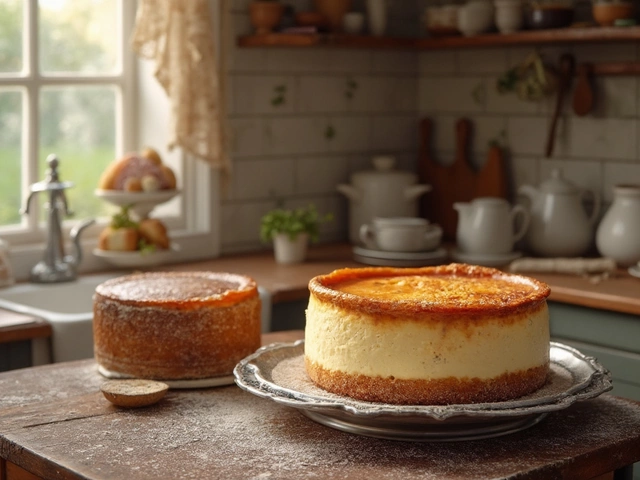
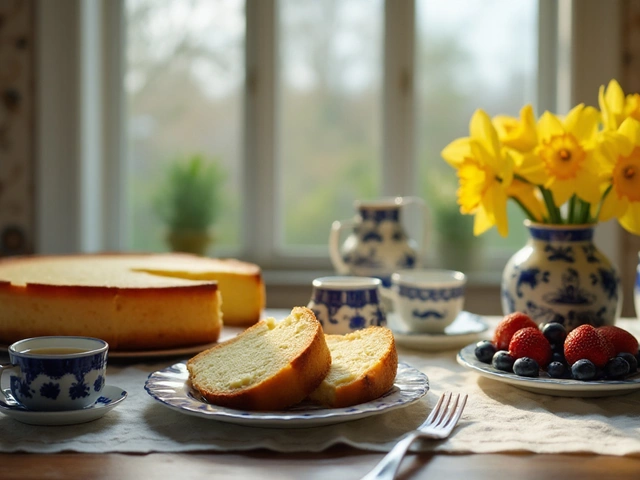
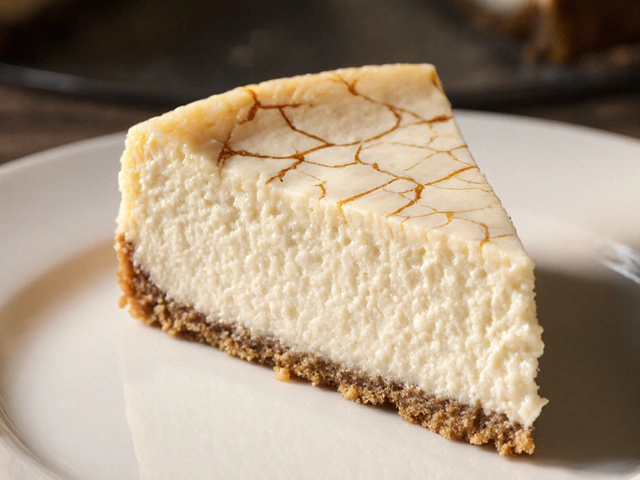
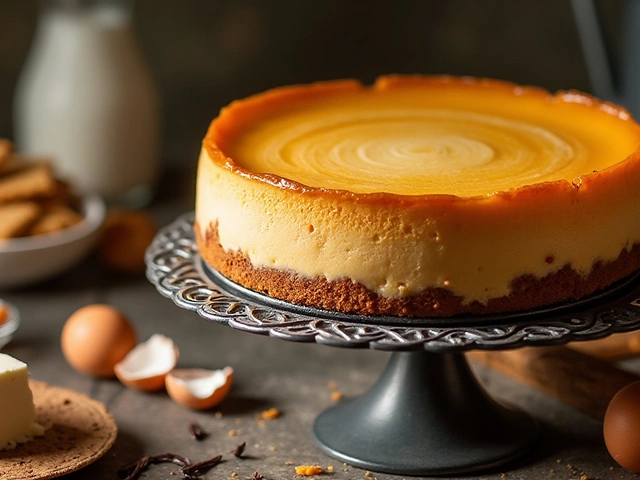
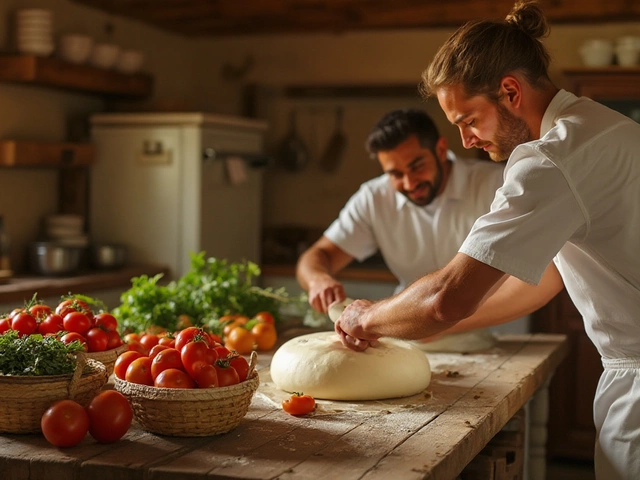
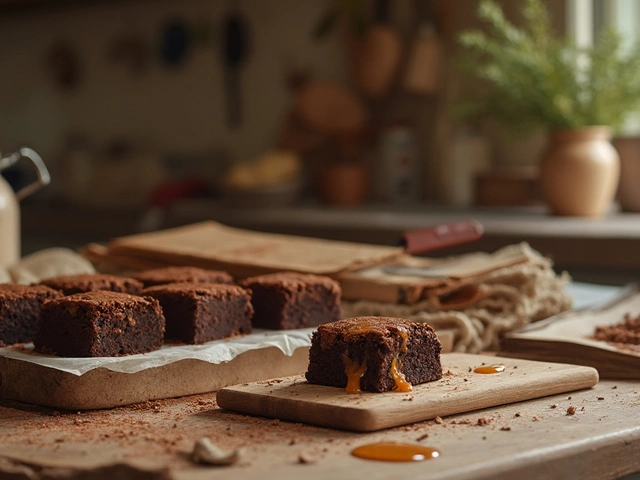
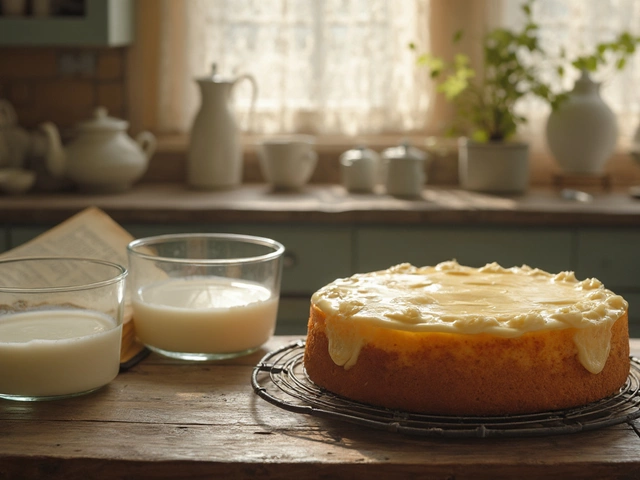
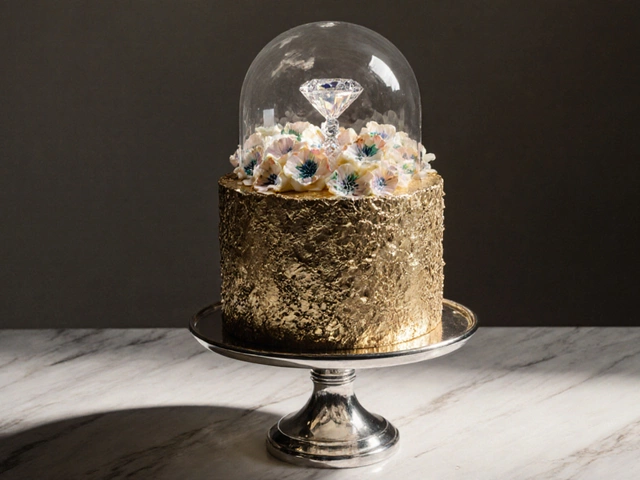
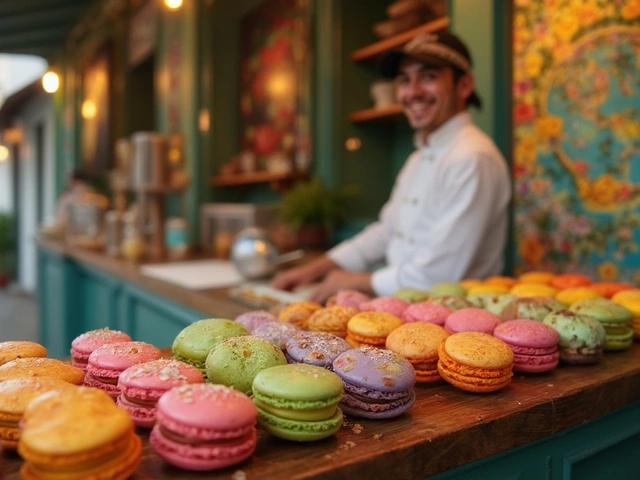
Write a comment